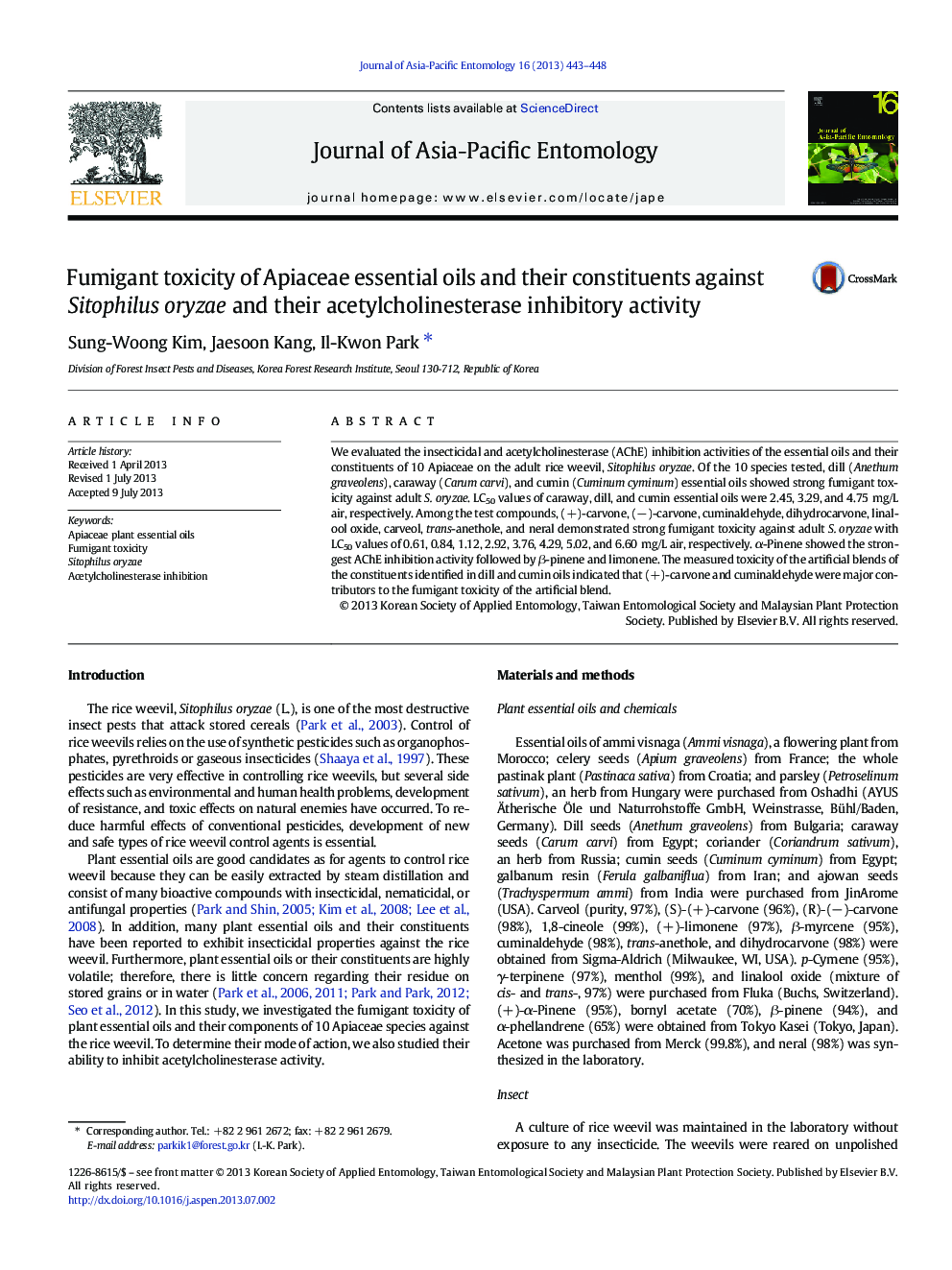| Article ID | Journal | Published Year | Pages | File Type |
|---|---|---|---|---|
| 4524504 | Journal of Asia-Pacific Entomology | 2013 | 6 Pages |
•Dill, caraway, and cumin essential oils exhibited strong fumigant toxicity.•(+)-Carvone was the most toxic followed by (−)-carvone, and cuminaldehyde.•α-Pinene showed the strongest AChE inhibition activity.•(+)-Carvone and cuminaldehyde were major contributors to the fumigant toxicity.
We evaluated the insecticidal and acetylcholinesterase (AChE) inhibition activities of the essential oils and their constituents of 10 Apiaceae on the adult rice weevil, Sitophilus oryzae. Of the 10 species tested, dill (Anethum graveolens), caraway (Carum carvi), and cumin (Cuminum cyminum) essential oils showed strong fumigant toxicity against adult S. oryzae. LC50 values of caraway, dill, and cumin essential oils were 2.45, 3.29, and 4.75 mg/L air, respectively. Among the test compounds, (+)-carvone, (−)-carvone, cuminaldehyde, dihydrocarvone, linalool oxide, carveol, trans-anethole, and neral demonstrated strong fumigant toxicity against adult S. oryzae with LC50 values of 0.61, 0.84, 1.12, 2.92, 3.76, 4.29, 5.02, and 6.60 mg/L air, respectively. α-Pinene showed the strongest AChE inhibition activity followed by β-pinene and limonene. The measured toxicity of the artificial blends of the constituents identified in dill and cumin oils indicated that (+)-carvone and cuminaldehyde were major contributors to the fumigant toxicity of the artificial blend.
Graphical abstractFigure optionsDownload full-size imageDownload as PowerPoint slide
